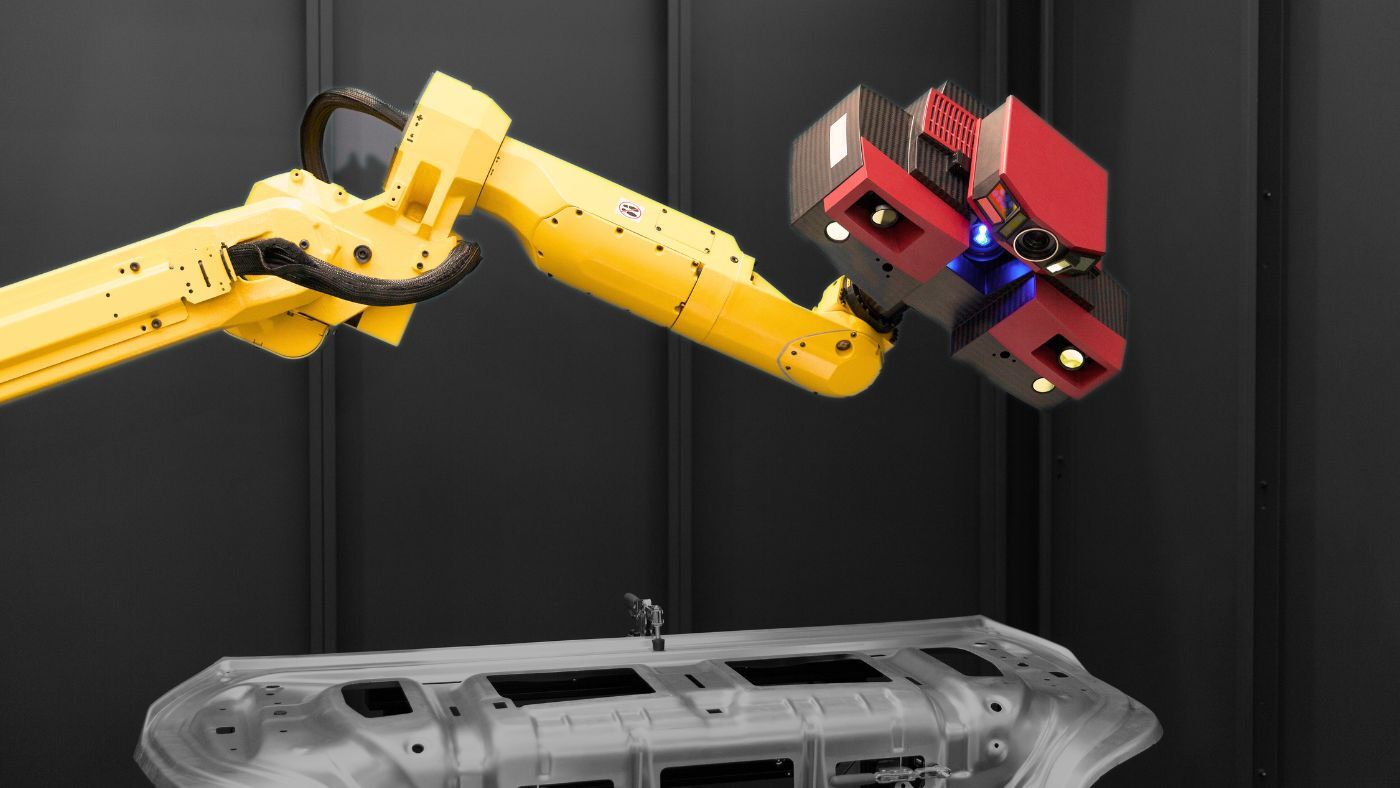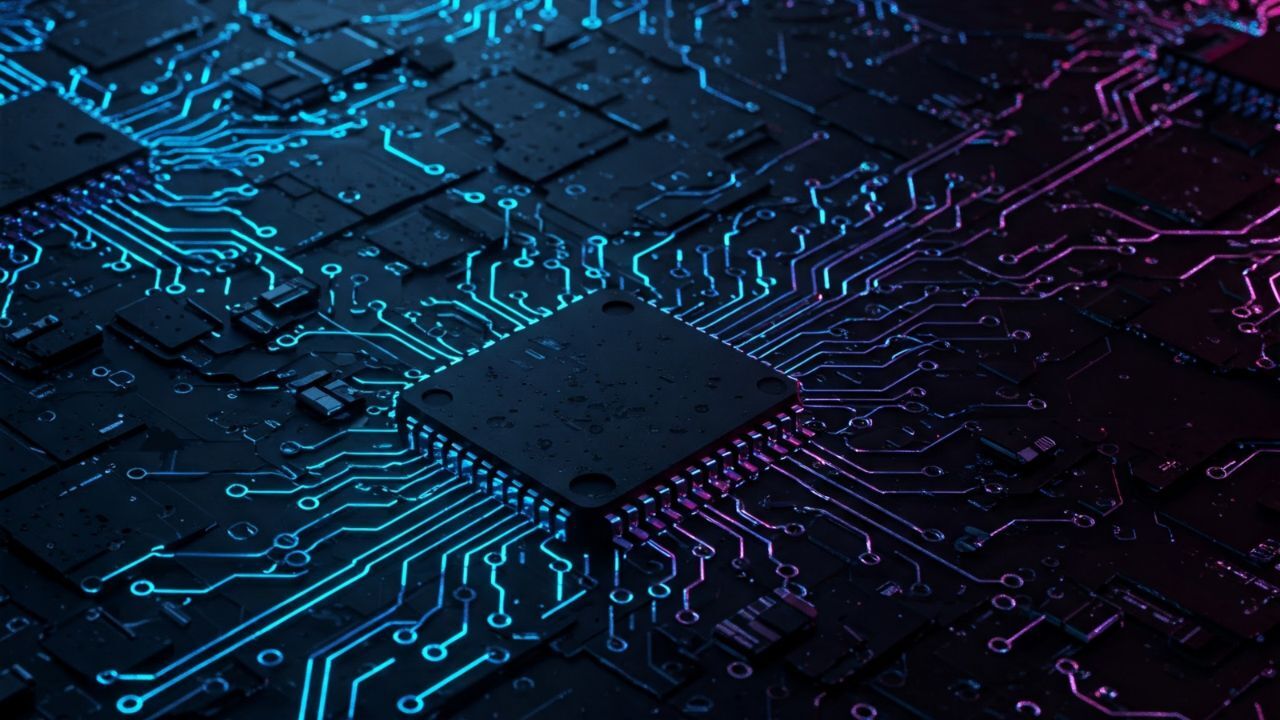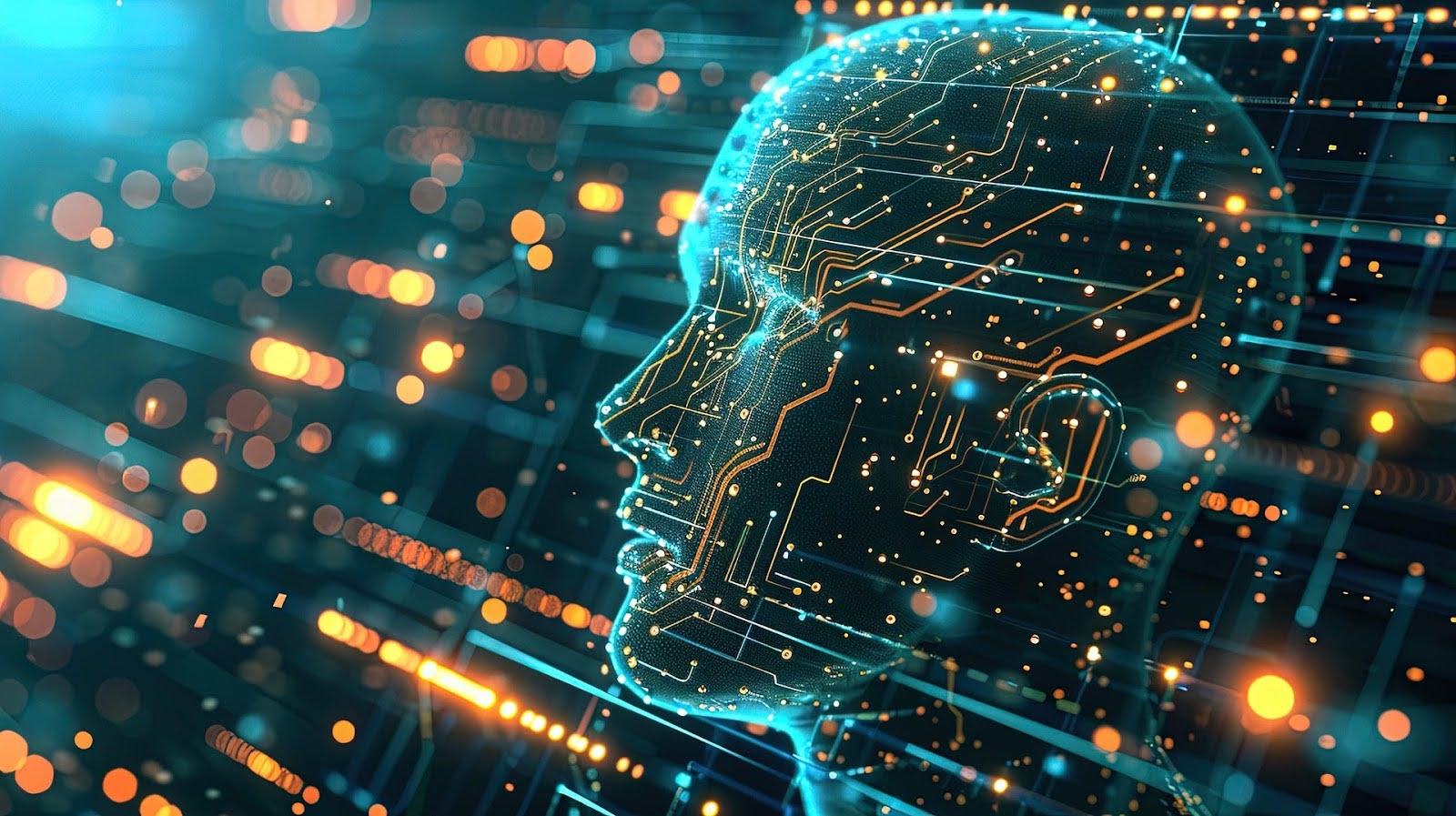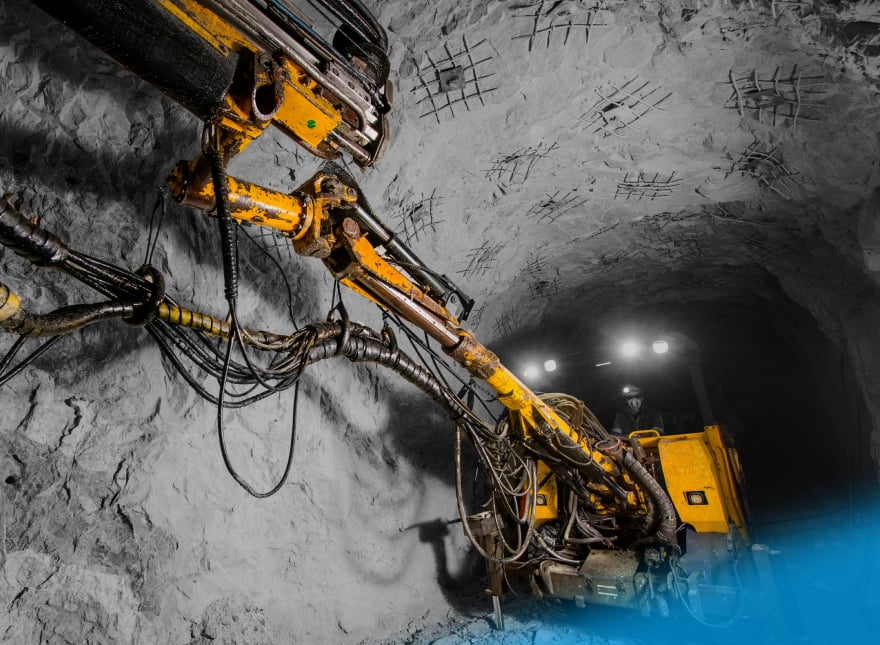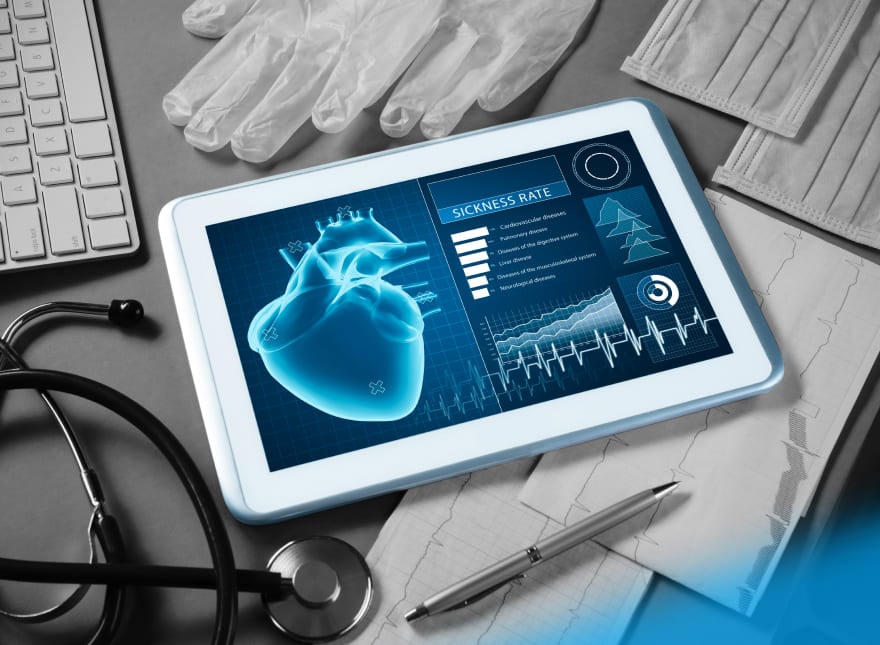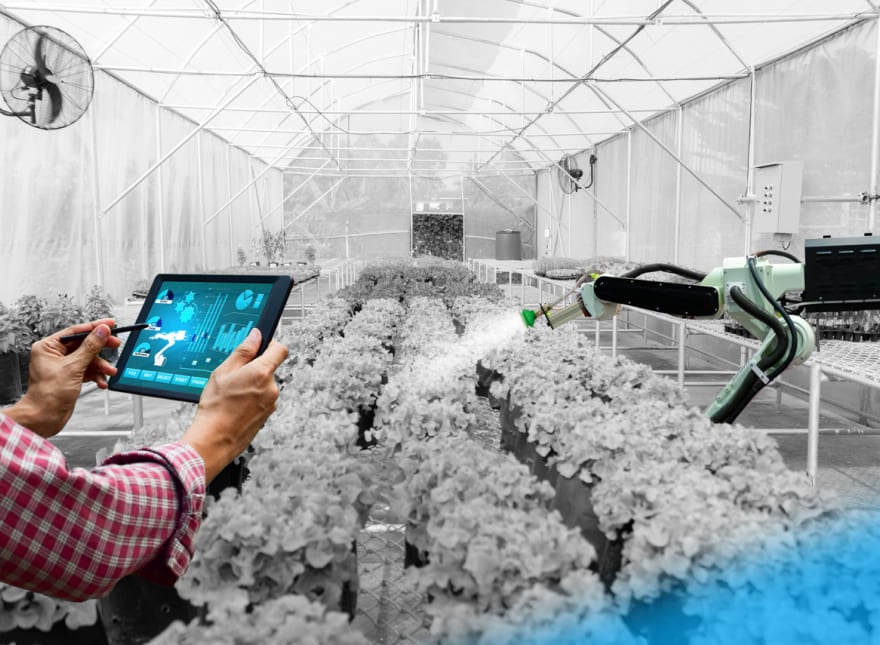Check out our latest blog article: From component to enterprise – modular robotics done right.
3 Examples of Using AI and Robotics in Nursing
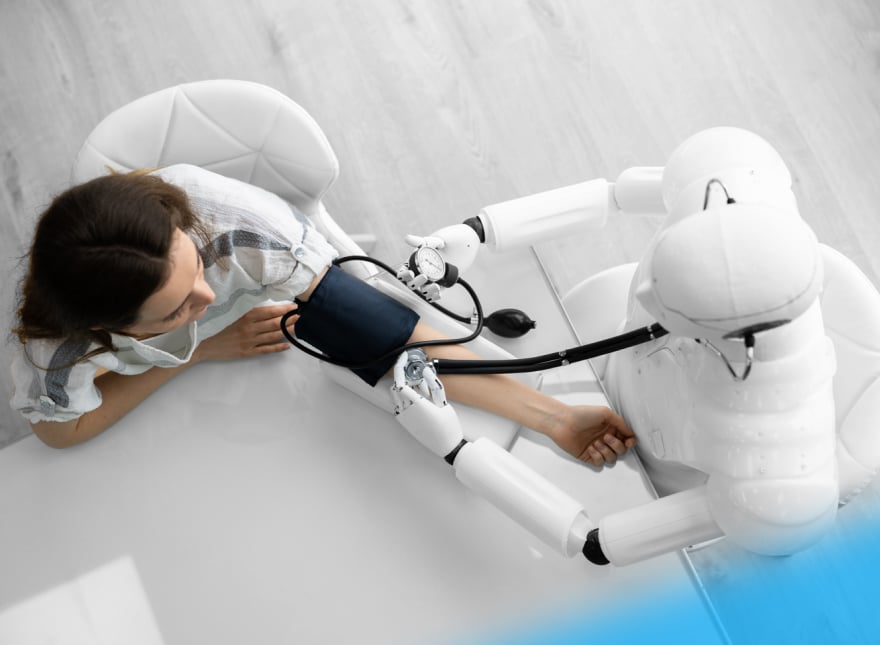
Meet Sophia. Created by Hanson Robotics, she is one of the most beautiful humanoid robots in nursing. Sophia’s mission is to take care of the sick or elderly. She can move, talk, and express feelings with facial expressions and gestures, which are very similar to those seen in real humans. Thanks to AI, Sophia can analyze conversations and improve her future answers. Now, the robot has at least nine “siblings”.
Aging populations all over the globe and shortages in nursing staff make AI-powered robots both timely and trendy. Experts predict that the medical robotics market has a promising outlook.
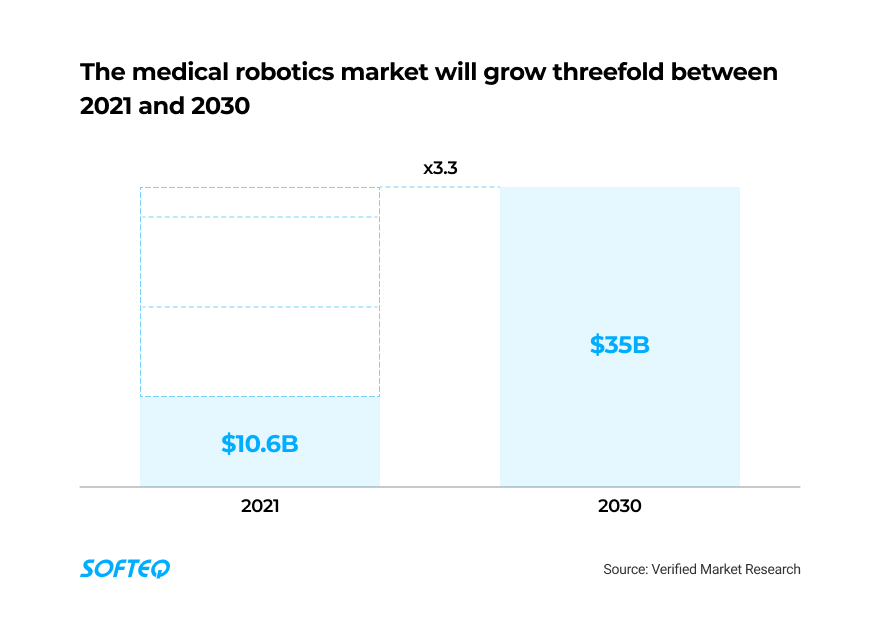
Today, there is a wide variety of robotics solutions. Take a look at three profitable and effective uses of blending AI and robotics in nursing.
Case 1. Telepresence Robots
To communicate with patients remotely, caregivers use telepresence robots as their eyes and ears. Such communication is made possible with built-in cameras, speakers, and microphones. Some robots are simply synced with phones or tablets, and others also have autonomous navigation—they move to avoid obstacles.
Adding AI increases the capabilities of telepresence robots. For example, natural language processing improves the accuracy of speech detection, which is essential for working with people. In general, AI makes robots understand and reproduce human language. It also helps robots move in challenging areas and learn how to complete more difficult tasks over time. Some robots are smart enough to point out specific health conditions from their patient’s voice or movements.
Real-Life Example
The National Robotarium is a center for Robotics and AI in Scotland. They created a prototype of an AI-based telepresence robot. The solution allows health practitioners to remotely watch people with dementia or Alzheimer’s. It uses AI to track smart home sensors and detect and analyze a patient’s daily activities. The 24-hour assistant is designed to respond to emergencies and provide help when needed.
Benefits at a Glance
- Early detection of specific health conditions
- Saved budget on face-to-face diagnostics
- Reduced caregiver workload
- Enhanced decision-making
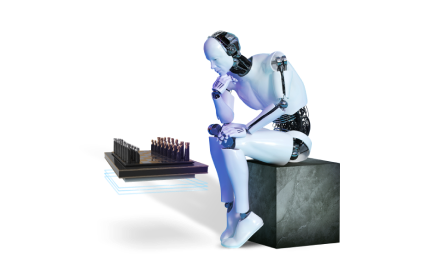
Case 2. Nursing Assistants
Robots can assist nurses in many day-to-day tasks. They can record vitals, dispense medications, and watch personal health conditions. Some robotic nurse assistants come with an element of emotional intelligence and can work as companions. Robots like this deliver news, remind patients about appointments, and connect with families. What’s interesting is that companion robots can come in the form of robotic pets. For example, they can be used in therapy in pediatrics.
On the tech side, you can equip nursing robots with visual recognition and voice assistance. Thanks to AI, it’s also possible to get health information from cameras and microphones. For example, AI robots can detect non-verbal cues of depression and anxiety.
Real-Life Example
Aibo is an AI-powered puppy—a robot companion created by Sony. It was built to provide companionship for different groups of people and lower their stress levels. Aibo can help its owners cope with their social and emotional needs. Owners can name their robot, witness its growth, and teach it tricks. It can reflect a wide range of emotions—from joy to anger—through its lively LED-illuminated face. It’s also fitted with fisheye cameras that can recognize individual faces.
One of the possible areas where this technology can be used is for robot-assisted therapy in pediatric treatment. Medical sessions with robots like Aibo can help children express themselves more positively while encouraging active participation and exploration. Robotic companions can also be helpful in working with socially isolated seniors and individuals with dementia or Alzheimer’s disease.
Benefits at a Glance
- Reducing burden on therapists or caregivers
- Automating tasks like recording vitals and dispensing medications
- Recognizing patients’ health conditions faster
Case 3. Rehabilitation Robots
Rehabilitation robots can serve as rehabilitation physicians. They are handy for patients with motor disorders and can help them relearn motor skills. Rehab robots can also assist people with a spinal cord condition or stroke in their daily activities.
An example of a rehabilitation robot is an exoskeleton attached to the user’s limbs. There are three types:
- A grounded exoskeleton—a stationary solution like a treadmill
- An end-effector device installed at the end of the limb, like a walker for gait rehabilitation
- A wearable exoskeleton used as orthoses to adapt for physical activity
Each type of rehab robot can watch the physical capacity and strength of the patient with the help of sensors. AI-powered solutions read the environment and analyze the patient’s movements during a rehabilitation session, assisting the user by predicting how they will move. This type of robot can also learn from the data it collects over time. AI also helps modify the intensity of the therapy. Plus, some solutions can even provide back support for health professionals like surgeons and nurses.
Exoskeletons that help people move have motors and energy sources, so they are heavy. In healthcare, it’s crucial to create robots that are as lightweight as possible. For this reason, they are created for particular parts of the body only and for limited tasks.
Real-Life Example
Researchers from the RIKEN Guardian Robot Project created an exoskeleton for people with mobility impairments. It’s a lightweight, carbon fiber-based exoskeleton for the lower part of the body that is worn on the lower legs and thighs. In-built AI helps predict how the user wants to move. For example, the exoskeleton can foresee when people are trying to stand up and help with the movement.
Benefits at a Glance
- Supporting healthcare workers with repetitive manual tasks
- Providing back support to health professionals
- Reducing nurse fatigue
- Improving patient care delivery
- Reducing the duration of rehabilitation
Perspectives of AI and Robotics in Nursing
AI robots in nursing are in high demand because of outcomes from COVID-19, the growing elderly population, and the boom in tech innovation. Let’s have a look at some key industry drivers we’re observing today:
- Rapidly aging population. In the US today, there are more than 54M adults aged 65 and older (according to the US Census Bureau) and this number will hit 71M by 2030. This goes hand in hand with an increase in various chronic diseases and a need to monitor and rehabilitate patients. This adds extra pressure to the senior care market and inspires ideas for startups.
- High demand for consumer and medical connected devices. These include wearables, smart home devices, and various healthcare gadgets. Moreover, the share of tech users who are 65 and older has grown markedly in the past decade.
- Rising demand for virtual tech due to the COVID-19 outbreak. The virus has boosted demand for various remote patient monitoring solutions—from wearable patches to telepresence robots—and their popularity continues to rise.
- Growth of technological innovations. This growth spreads from all-round connectivity to the reduced size and cost and increased accuracy of hardware components.
- Booming AI. AI is gaining momentum across the entire healthcare industry: by 2029, the value of AI will have increased tenfold. Virtual nursing assistants are among the top AI app areas in healthcare with great potential. As a result, investment in AI systems is rising.
Bottom Line
The evolving medical robotics market offers multiple solutions for healthcare providers and brings challenges for startups. If you have already started the journey of building an AI robot or you are just thinking about creating one, Softeq can be your technology partner at any stage of the project.
More articles on the topic
